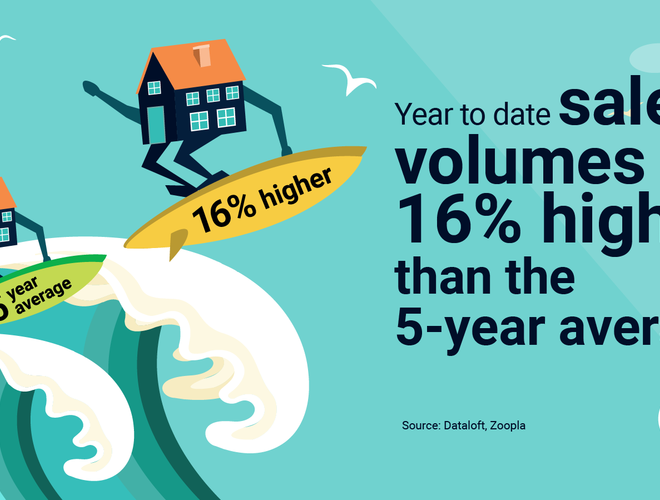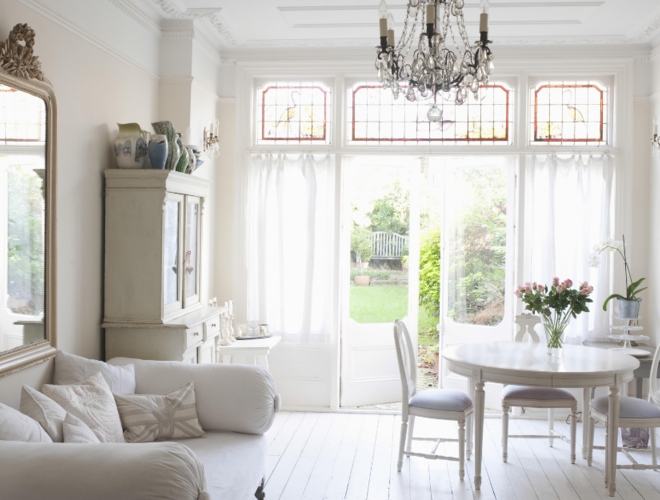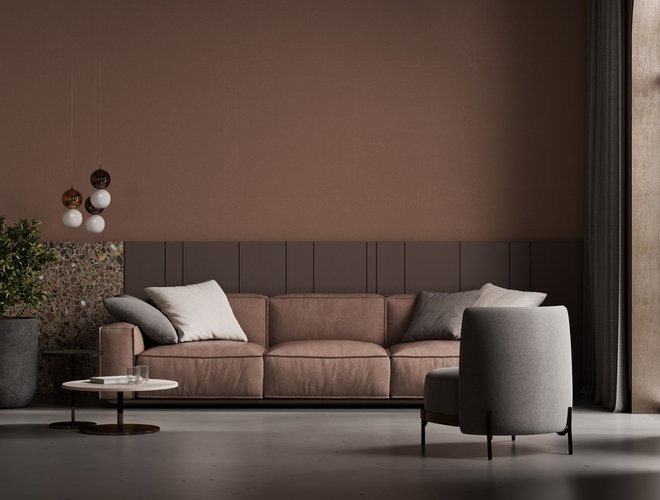Take a look outside. Do you see a cosy, inviting haven or a jumble of mismatched plant pots, a rusty barbecue and garden furniture that feels too big for the space?
If it’s the latter, don’t despair, help is at hand. Whether your outdoor area is a small balcony, a terrace or a tiny garden, it can become the perfect spot for relaxing and entertaining. Simply follow our small garden design tips to make the most of your bijou space.

1: Develop Your Vision
Think about how you currently use your outdoor area and how you would like to use it in future. Do you imagine friends gathered around a firepit or outdoor bar? Or is your ideal simply a gorgeous, green oasis where you can chill out with a good book?
If you can develop a clear vision for your space, it will guide your plans for designing and planting.
2: Follow The Sun
Start by noting the way the light falls at different times of the day and seasons of the year. That will not only help you choose plants that will thrive well, it will also tell you where to position your garden furniture.
Bear in mind the location of any trees that can provide shade at different times of the day.

3: Establish The Basics
The next step is to jot down some basic measurements to establish the size of the footprint you have to work with. Create a scale plan, showing each metre as 5 cm (a scale of 1:20). Don’t forget to add in any existing features such as steps, trees or ponds.
With a plan in place, you can make better use of the available space. Before buying big items such as planters, firepits or furniture, check against the plan to make sure they will fit comfortably. (Don’t forget to leave clear pathways so people can move around).

4: Consider privacy issues
If your garden, balcony or terrace is overlooked by neighbouring properties, there may be ways to create a more secluded space without reducing too much natural light. You could use screens, trellises or carefully placed tall plants to increase privacy, but do consider boundary laws before installing higher fences.
Garden owners will need to check the deeds of their property to discover who is responsible for each fence. In UK law, fences can be a maximum of two metres high in the back garden and one metre high in the front. If you want to erect a taller fence, you must seek planning permission from your local authority before going ahead.
5: Embrace the vertical love levels
While it's useful to draw up a scale plan of your outdoor area, don’t feel constrained by the footprint. You can make the most of the available space by creating interest at eye level and above.

Vertical planting is a great way to surround yourself with even more lush greenery. Ideas include training climbing plants along existing walls and fences or letting them grow up freestanding structures. Hanging baskets or green walls can also help you get even more out of vertical spaces, while shelving adds interest.
A few simple shelves fixed to a brick wall or sturdy fence can provide extra space for a garden bar or a display of trailing geraniums. Another way to introduce different levels is to use multi-tiered plant stands.
6: Be space-saving savvy
Consider purchasing foldable or stackable furniture and invest in pieces that can be used for multiple functions. For example, a storage box that doubles as a garden bench will provide seating as well as a place to pack away tools or cushions.

If you have a balcony or terrace, you could save space by fitting a fold-down table and using stools instead of chairs. You’ll also find a number of exciting balcony bar-top ideas on Pinterest. However, tenants renting apartments should check their rental agreements before adding furniture or other features to a terrace or balcony.
7: Choosing your plants
With a whole world of choices available in terms of planting, it’s easy to feel overwhelmed. You can draw up a more manageable list by considering the following:
- The amount of sunlight and shade available.
- How much time you are willing to spend looking after your plants.
- The theme you have devised for your space.
- How you will use colour and scent to stimulate the senses.
Be practical about your plant choices: there’s little point in placing Mediterranean shrubs like bougainvillaea or oleander on a balcony or terrace that never gets full sun. Similarly, avoid plants that need constant watering if your lifestyle means you are often away.

The Royal Horticultural Association’s website is a great source of information, as it lists the height of each plant and its ideal growing position. Once you have decided on a theme (ferns and grasses? Country cottage? Drought tolerant?), pick some plants that will work well together within the style you have chosen.
8: Keep your garden blooming (seasonal considerations)
Take a little care when picking your plants, and they will reward you by blooming throughout the spring, summer and autumn. Check the flowering periods of the species you buy to make sure they provide a constant display: from spring bulbs (which can be layered to prolong flowering times) to perennials that provide autumn colour, like Michaelmas daisy and Chrysanthemum.
When you see the word ‘perennial’, it means that your plant should flower year after year. ‘Annual’ or ‘biennial’ plants die off after a year or two but can be grown again from seed. Look out for evergreen shrubs and climbers if you want your garden to stay green all year round.

9: Pots, troughs or raised beds?
Containers work well in small spaces, and attractive pots can really enhance your balcony, terrace or bijou garden space. Small garden maintenance is often easier with raised beds, which can also take up less space than traditional flower beds.
If you’ve decided to focus on container gardening, be sure to water your plants regularly. Plants in pots or troughs dry out much faster than those growing in the ground, but roots can be kept moist by using water-retaining gel crystals.

10: Make your space seem larger
Garden designers have recently discovered the technique of using carefully placed mirrors to make an outdoor space seem bigger. Try positioning a mirror just behind a leafy shrub to give the illusion of a larger space beyond.
Another trick is to use a lighter colour palette for your garden design, as light colours trick the eye into making a space feel bigger. When you paint your fence or buy pots, furniture and cushions, bear lighter, brighter tones in mind.
11: Create an inviting ambience
Outdoor rugs, fluffy blankets, and fairy lights can make your space feel warm and cosy, even after the sun has gone down. Using a rug is a great way to define your seating area, while lights – including lanterns, fairy lights or solar sticks – keep the magical mood going throughout the evening.
One of the most popular features of contemporary garden design is the fire pit. Not only does a fire pit provide light (and heat, as the evenings grow a little chilly), but it’s also a fun way to toast chestnuts or marshmallows with friends.
12: Add some visual interest
You can give more structure to the space by adding a focal point such as an obelisk, a distinctive tall plant or a small water feature.
Use colour to create interest: red canna lilies contrast well with subtle, white and grey planting, and colourful plant pots look great arranged against a pastel-painted fence.
An eye-catching outdoor sculpture or other artwork can also provide an attractive focus.

Properties in St Albans with outdoor space
We all need a place where we can relax and appreciate nature. As experienced independent estate agents in St Albans, we know it’s important to be able to enjoy your own personal outside space (whatever size your outdoor haven might be).
Fortunately, we can offer a fantastic range of properties, either to rent or buy, that offer private access to the great outdoors. Whether you’re looking for a sunny roof terrace, a balcony with city views or a low-maintenance garden, we would be delighted to help you find your perfect home.




